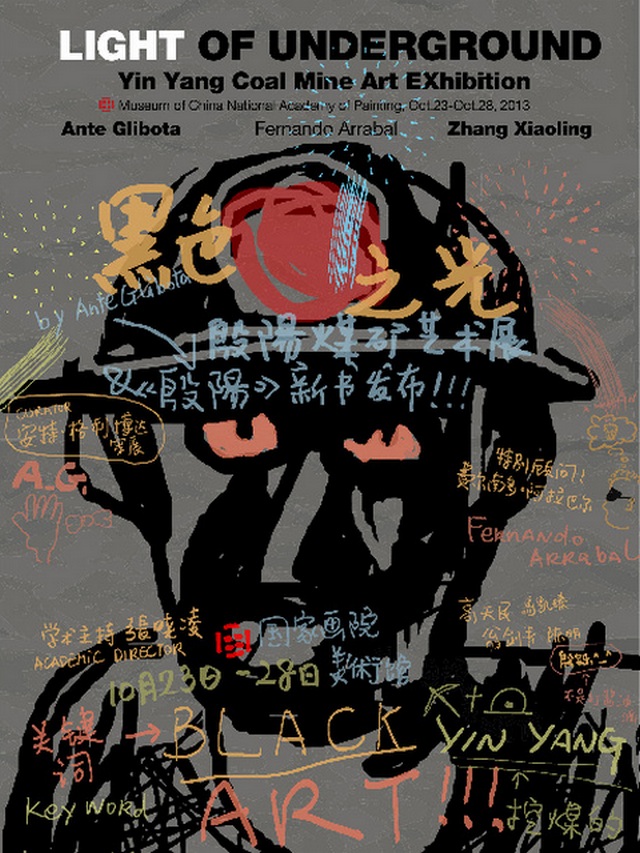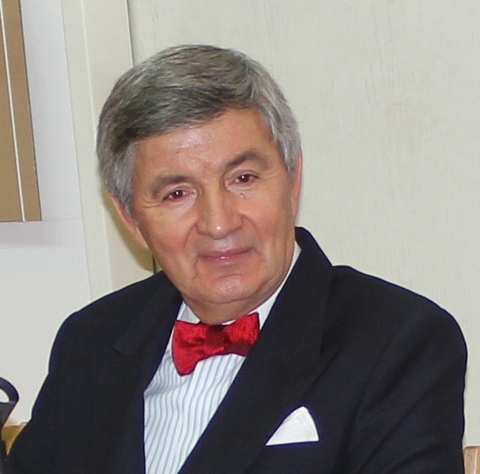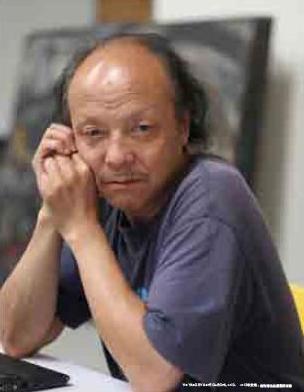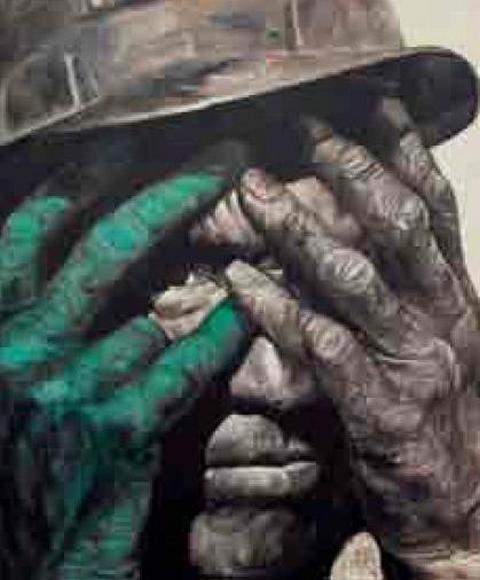Ante Glibota Croatian historian of Art published a monograph about Chinese painter Yin Yang in Bejing
http://www.croatia.org/crown/articles/10474/1/Ante-Glibota-Croatian-historian-of-Art-published-a-monograph-about-Chinese-painter-Yin-Yang-in-Bejing.html
By Darko Žubrinić
Published on 10/27/2013




 | Ante Glibota: "...Through his visual work, Yin Yang appears through this book’s pages as a crusher of immaterial, divine and earthly ideas, and imposes himself by the gesture’s apotheosis, and in the reconciliation of the human, philosophical and spiritual values, unifying the whole in tonalities that unveil the simplicity and the colorimetrical richness of the light’s surface. The spirit and the soul are thus transported toward an imaginary that opens up the way towards unattainable issues. ..." We congratulate Mr. Ante Glibota for his very nice 2013 monograph published by Delight Edition. Mr. Glibota is distinguished Croatian historian of art and architecture, living in Paris and Shanghai, and a titular member of the European Academy of Arts, Sciences and Letters in France. |
Yin Ynag - Philosopher Painter

A monograph by Mr. Ante Glibota about Yin Yang, distinguished Chinese artist. The book has 510 pp., ISBN 978-988-19552-2-7.
We congratulate Mr. Ante Glibota for his very nice 2013 monograph published by Delight Edition.

Yin Yang, philosopher painter. Photo by Ante Glibota.
The monograph has been prepared on the occasion of 60th birthday of the painter.
We congratulate Mr. Ante Glibota for his very nice 2013 monograph published by Delight Edition.

Yin Yang, philosopher painter. Photo by Ante Glibota.
The monograph has been prepared on the occasion of 60th birthday of the painter.
| Ante Glibota: Yin Yang (a short excerpt from the monograph, with kind permission of Mr. Glibota) A strange feeling takes over when we think of the Chinese artist Yin Yang, whose work we have had the pleasure of seeing for many years. Each new encounter with the oeuvre, as well as with the artist, has provided an inquisitive frame of mind, each new encounter offered us a new enigma to imagine, a new possible issue as regards our querying as to the meaning of this work, short of providing us immediately with a mentally satisfying and definitive answer, which might set us free from the tenor of our questions and of our uncertainties.  Such is the point of this book currently devoted to the artist, the focus of many querying faced with the uncertainties that inhabit us, despite the presence simultaneously of a genuine oeuvre and of a creative work that inspires us, seduces us and convinces us. This book’s undertaking has required many years to set out pertinent ideas on the works’ meanderings, on the artist’s artistic adventure, and equally as a consequence of his fascinating life, that has nourished the widespread concepts as regards his work, his preoccupations be they creative, artistic, philosophical and aesthetic.  The body of work by the artist Yin Yang and this book require that we enter into it little by little, with a certain slowness, needing a profound and philosophical reflection, which inspire the work itself and the difficult existential experience that the Chinese artist lived through. Yin Yang used his work to reconstruct his own life, thus metamorphosing it into an exemplary adventure, ample and unique to be thought about! Before us, there appears a human enterprise that over-rode, from its very beginnings, the revolutionary times of a modern Chinese state, with all the complexity one can imagine, an experience common to a whole people, on the threshold of a new China. Wars: the Japanese occupation, the war of liberation and the civil war, post-revolutionary purges, work camps, separations, all of those turn up in Yin Yang’s family landscapes, and have necessarily left visible traces in his creative cursus. For a subtle analyst of this artistic adventure, there appear in filigree suffering, exhausting work, hunger, fear but also joy, the perception of good, joyfulness, hope… which burst out above the tonal grayness of these expressive and powerful works. To live that human and artistic life needed so much effort and so much simplicity, modesty, candor, perseverance, spirit and in the end a genuinely thoughtful philosophy. It appears clearly that all of that was present in Chinese artist’s person, whose works’ effervescence and their visual message traced a route before us simultaneously original, inspired and authentic!  That extremely refined artistic adventure, the tempo of the pictorial works was subjected to a delicate feel for measure. It acts like a glance, the reflection of a delicate mirror that calculates silences, harmoniously accords to the structure of the condensed deafness of the poetical resources that provide a stimulus enabling the dream of delectable imaginaries. Spirituality also sometimes springs forth in Yin Yang’s work, but it is simply blurred, transposed. It will become more obvious in the most recent works like a glimpse of wisdom, perceptible within a demultiplied mirror game. The miner’s lamp painted within a sequence of movements or else solitary, summons up an interiorized dual sense and furnishes a sufficiently laicized parabola, also providing, for those who can read another approach without for all that, staining its ambivalence. The tragic character, the loneliness often, the touching despair of those painted miners, their gaze turned to the earth, that abdicative solitude that begs understanding, lead us to not remain silent, for these paintings by Yin Yang go through us like a gentle quivering, but at the same time they resonate like a cry of alarm on the human condition. These sixty years of existence, and some forty five years of an artistic life, make up a certain level, a certain distance, from which art history or History can lean out, and draw certain conclusions based on well established elements. It appears henceforth that existence and that creative and artistic life, according to the analysis of the visible forms that the present volume provides, nourished one another and one clearly distinguishes, in Yin Yang’s personal cursus and in his artistic creativity, that a unity appears, integrating a visual and philosophical order of behavior, endowed with the expression of a style and of a vision that are juxtaposed within a harmonious and happy symbiosis. If one closely examines his life and his oeuvre, one can define Yin Yang’s cursus in four distinct and logical stages:
... Through his visual work, Yin Yang appears through this book’s pages as a crusher of immaterial, divine and earthly ideas, and imposes himself by the gesture’s apotheosis, and in the reconciliation of the human, philosophical and spiritual values, unifying the whole in tonalities that unveil the simplicity and the colorimetrical richness of the light’s surface. The spirit and the soul are thus transported toward an imaginary that opens up the way towards unattainable issues. His creative philosophy is based on the importance of being oneself, free, authentic, but it is also based on the fact that he creates with his heart and that his intentions remain intact. Which Marc Chagall very clearly expressed thus : "One must not fear to be oneself, to only express oneself. If you are totally sincere, what you do, what you say, will suit others. You must be careful not to let one’s work be covered in moss". As though by a celestial sign, the artist Yin Yang already combines in his name and first name the two symbiotic and complementary elements that one finds in all the segments of life, of the universe; two entities that the Chinese cosmology cherishes particularly and that follow the original breath, the qi, which for every connoisseur of Chinese civilization provides answers to numerous questions deliberately evoked or hidden through the text and the pictures of this book. Ante Glibota, Paris, October 2013. Mr. Ante Glibota is distinguished Croatian historian of art and architecture, living in Paris and Shanghai, and a titular member of the European Academy of Arts, Sciences and Letters in France |

On 23rd September 2013 Mr. Ante Glibota opened the exhibition Light of Underground in Bejing,
in the China National Academy of Painting.

in the China National Academy of Painting.


Ante Glibota in Zagreb, 30th November 2012,
honoured by a special recoginition for international promotion of Croatian culture,
awarded by the the NGO of Defenders, Invalids and Widows of Croatian Homeland War 1991-1995,
directed by Mr. Mladen Pavković, Podravka, town of Koprivnica.
honoured by a special recoginition for international promotion of Croatian culture,
awarded by the the NGO of Defenders, Invalids and Widows of Croatian Homeland War 1991-1995,
directed by Mr. Mladen Pavković, Podravka, town of Koprivnica.
Formated for CROWN by Darko Žubrinić
Distributed by www.Croatia.org . This message is intended for Croatian Associations/Institutions and their Friends in Croatia and in the World. The opinions/articles expressed on this list do not reflect personal opinions of the moderator. If the reader of this message is not the intended recipient, please delete or destroy all copies of this communication and please, let us know!